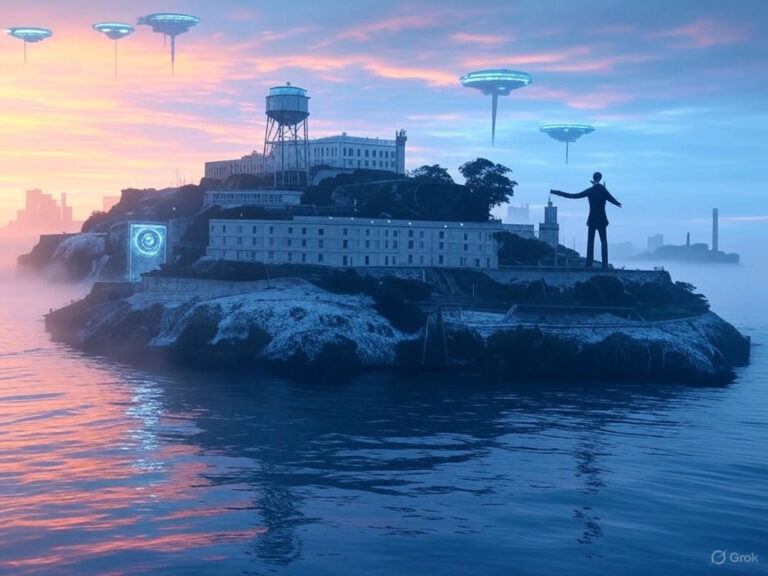
Gaza Occupation Plans: Israel’s Strategy if No Deal Before Trump Trip
Introduction
Have you ever considered how a single deadline could reshape an entire region? Gaza occupation plans are emerging as a flashpoint in Middle East tensions, with Israel preparing a bold strategy to potentially re-occupy the Gaza Strip if no ceasefire and hostage deal materializes before U.S. President Donald Trump’s upcoming trip. This move, tied to a May 15 cutoff, could escalate the conflict dramatically, affecting millions and drawing worldwide attention.
Key Elements of Gaza Occupation Plans
At the heart of these Gaza occupation plans lies a detailed blueprint from Israel’s Security Cabinet, authorizing the Israel Defense Forces (IDF) to launch a comprehensive invasion if negotiations collapse. Set against the backdrop of Trump’s visit, this strategy involves deploying multiple divisions to take control, potentially upending the status quo in Gaza. It’s a high-stakes gamble that could lead to prolonged instability.
Major Components of the Strategy
- Full-scale military occupation: The plan calls for capturing and maintaining control over the entire Gaza Strip with four or five armored and infantry divisions, a move that echoes past operations but on a larger scale.
- Mass displacement: Imagine forcing over two million people into a confined “humanitarian area” in southern Gaza—this component aims to relocate the population, raising ethical questions about the human cost.
- Destruction of infrastructure: Buildings could be systematically demolished, with aid capped at around 60 trucks daily, limiting essentials like food and medicine and worsening daily life for residents.
- Potential for long-term occupation: What starts as a tactical operation might evolve into an indefinite presence, a scenario that has experts worried about the long-term ramifications for peace in the region.
These Gaza occupation plans aren’t just theoretical; they’re based on real approvals and could unfold rapidly. As you think about this, consider how such actions might affect everyday people caught in the crossfire.
Humanitarian and Political Ramifications of Gaza Occupation Plans
The fallout from implementing these Gaza occupation plans could be devastating, amplifying an already dire humanitarian crisis. Displacing millions risks mass casualties and strains global aid efforts, while politically, it’s stirring backlash from both domestic and international voices.
International Reaction and Legal Concerns
- Humanitarian crisis: Forcible displacement under these plans might violate international law, with some experts labeling it as potential crimes against humanity—think about the legal precedents from past conflicts that could come into play.
- Global opposition: Countries and organizations like the United Nations are voicing strong disapproval, fearing it could ignite broader violence and destabilize the Middle East further.
- Aid limitations: With restrictions on supplies, the situation in Gaza could deteriorate quickly, leaving residents in a vulnerable state that demands immediate attention from the world stage.
It’s hard not to wonder: How do we balance security needs with human rights in scenarios like this? These concerns highlight the broader implications of Israel’s strategy.
Trump’s Stance and the Gaza Occupation Vision
President Trump has largely deferred to Prime Minister Benjamin Netanyahu on matters of Gaza occupation plans, offering little intervention in ongoing talks. Yet, an AI-generated video from Trump paints a rosy picture of Gaza’s future, which feels out of touch with the grim realities on the ground.
Trump’s “Gaza Vision” Video Breakdown
- It showcases utopian scenes with skyscrapers and prosperity, but these images seem detached from actual conditions, almost like a hypothetical scenario gone viral.
- This video underscores a gap in U.S. policy, ignoring the humanitarian toll and debates over voluntary emigration—though no nations have stepped up to accept refugees.
- As a result, it raises questions about whether such visions align with feasible outcomes or just add to the confusion surrounding Gaza occupation plans.
Picture this: A futuristic Gaza in a video, while reality tells a different story. It’s a reminder that politics often mixes idealism with practicality in ways that affect real lives.
Israeli Public Opinion and Political Dynamics
Polls show that a majority of Israelis—around 60-70%—are against pursuing Gaza occupation plans, favoring diplomacy over military action to secure hostages and end the war. This divide reflects deeper political motivations, with Netanyahu’s coalition pushing for aggressive measures.
- Groups like hostage families argue that these plans could endanger lives, prioritizing land over people in a way that feels deeply personal.
- On the flip side, right-wing supporters see it as a chance for expansion and security, though at what cost?
If you’ve followed similar conflicts, you know public sentiment can shift strategies. Here, it’s a tug-of-war between immediate safety and long-term goals.
Comparing Current Gaza Occupation Plans to Past Policies
To understand the scale of these Gaza occupation plans, let’s compare them to Israel’s historical approach. This isn’t the first time Gaza has been a focal point, but the intensity marks a significant shift.
| Aspect | 2025 Re-Occupation Plan | Previous Policies (2005-2024) |
|---|---|---|
| Control | Full military occupation, indefinite presence | No ground occupation; reliance on blockade and airstrikes |
| Humanitarian Access | Strictly limited aid and concentrated population areas | Varying aid through checkpoints, with periodic easing |
| Political Goal | Aim to dismantle Hamas and possibly annex territory | Focus on containment and deterrence without direct rule |
| International Response | Heightened global condemnation and potential legal challenges | Intermittent criticism, with calls to reduce restrictions |
This comparison illustrates how Gaza occupation plans represent an escalation, potentially leading to more sustained conflict than before.
Risks and Uncertainties in Gaza Occupation Plans
As the deadline approaches, the risks tied to these Gaza occupation plans are mounting. A failed deal could trigger widespread war, endangering civilians and complicating any path to lasting peace.
What Lies Ahead?
- Diplomacy has a narrow window until Trump’s trip ends, offering a last chance to avert action.
- If no agreement by May 15, officials are ready to proceed, which might spark a cycle of retaliation.
- Advocates for peace are ramping up efforts, pushing for solutions that prioritize human lives over military gains.
What if a different approach could break this cycle? It’s a question worth pondering as tensions build.
Wrapping Up: The Path Forward
Gaza occupation plans stand at a crossroads for the Middle East, with decisions in the next weeks potentially altering the future. While the focus is on security, the human element can’t be overlooked—it’s about real people and their aspirations for stability.
If you’re reading this, I encourage you to share your thoughts in the comments below. What steps do you think could lead to a better outcome? Feel free to explore more on our site for related insights, and don’t hesitate to spread the word if this resonates with you.
References
For a deeper dive, here’s a list of sources used in this article:
- Axios. “Israel sets deadline for Gaza deal.” Link
- PBS NewsHour. “Israel plans to capture all of Gaza.” Link
- J Street. “Netanyahu’s Gaza re-occupation plan.” Link
- PMC. “Study on conflict impacts.” Link
- The Jerusalem Post. “Israel news on Gaza strategy.” Link
- Columbia Law Review. “Legal analysis of displacements.” Link
- FTSG. “Trump’s vision document.” Link
- Reuters Institute. “Media trends in conflicts.” Link
Gaza occupation plans, Israel strategy, Trump Middle East trip, Gaza ceasefire, Gaza re-occupation, Netanyahu policy, humanitarian crisis in Gaza, Middle East conflict, Israeli defense forces, international response to Gaza







